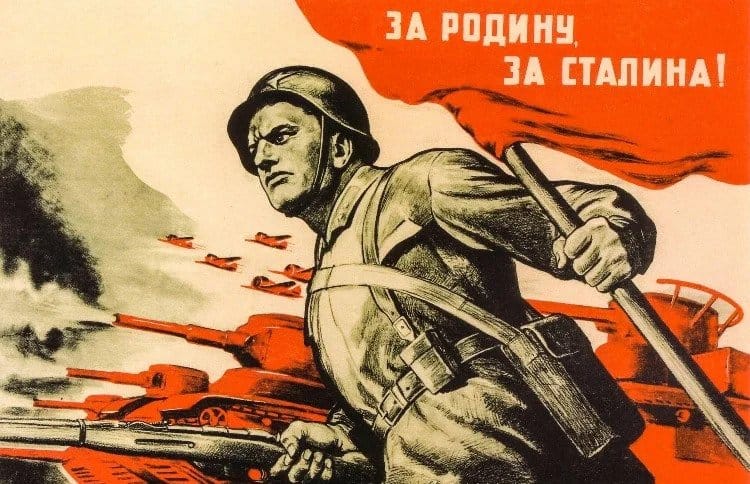
The Red Army, officially known as the Workers’ and Peasants’ Red Army, was the military force of the Soviet Union, established in the aftermath of the Russian Revolution of 1917.
The Red Army Origins and Early Expansion
After the Russian Revolution in 1917, the new Soviet government formed a Workers’ and Peasants’ Red Army.
The following Russian Civil War provoked losses, leading to a need for conscription.
The rising threat of Nazi Germany encouraged the Red Army to expand to 1.3 million members by 1935. In 1936, the Spanish Civil War provided a valuable opportunity to test new military equipment and tactics.
Army Growth and Reorganization
By 1941, the Red Army had grown to 4.8 million strong, with 2.9 million deployed in western military districts.
The conscription age was set at 18. A wave of purges started after Kirov’s assassination, significantly affecting the Red Army’s development.
High-ranking officers were disproportionately affected. This, combined with the rapid growth of the Red Army, lowered the troops’ quality and readiness for battle, leading to the overpromotion of younger personnel.
Table 1: Growth Over Time
| Year | Total Members | Members in Western Military Districts |
|---|---|---|
| 1917 | Initial formation | N/A |
| 1935 | 1.3 million | N/A |
| 1941 | 4.8 million | 2.9 million |
Key Events and Numbers:
- Purges began after Kirov’s assassination.
- High-ranking officers are disproportionately affected.
- Rapid growth led to lower troop quality.
Communist Party Influence and Leadership
To further solidify the ideological grip of the Communist Party, political officers were employed to monitor troops’ loyalty and keep morale high.
Some political officers, like Marshal Konev, who began his career as a Red Guard Commissar in 1918, even became renowned military leaders.
Conflicts and Tactical Evolution
The Red Army experienced significant growth in the late 1930s.
It was tested against Japanese forces at Lake Khasan in 1938 and the Khalkhin Gol River in 1939, where a young Major General Zhukov established himself as a capable military leader.
After failing to negotiate an exchange of territories near Leningrad in December 1939, the Red Army invaded Finland, initiating what would become known as the “Winter War” or the Soviet-Finnish War in the U.S.S.R. Victory was not achieved until March of 1940, when the Finns were finally overwhelmed by tanks, planes, and soldiers.
This exposed the weakness of the Army to Hitler.
Operation Barbarossa and its Aftermath
In 1941, the German Armed Forces and their fellow Axis combatants launched Operation Barbarossa, to Stalin’s disbelief.
The Soviet leadership had overhyped the Red Army’s capabilities just before the war, and the early defeats of 1941 heavily weighed on morale.
Weak logistics also contributed to these early defeats. At the border battles, Red Army units had to abandon their functional vehicles after ammunition and fuel were exhausted, and supplies were not delivered in time.
Table 2: Key Conflicts and Outcomes
| Year | Conflict | Outcome |
|---|---|---|
| 1938 | Lake Khasan against Japanese forces | Outcome |
| 1939 | Khalkhin Gol River against Japanese forces | Outcome |
| 1939-1940 | Winter War (Soviet-Finnish War) | Victory |
Lend-Lease Aid and Scorched Earth Tactics
The Red Army would also receive lend-lease aid from its allies, the United States and Britain.
As the Germans advanced, Stalin ordered the Red Army to use Scorched Earth tactics, destroying anything that the enemy might capture or use and evacuating factories to the east.
The Red Army Organizational Structure
The organization of the Red Army differed significantly from that of the Western Armies. The backbone of this army was the Rifle Division.
Typical Red Army divisions were twice as small as a Wehrmacht infantry division, but Soviet units had a larger proportion of officers than soldiers.
German Offensive in Moscow and Subsequent Victories
In late 1941, the German Army launched an offensive on Moscow.
However, the Red Army held its ground, and the Germans were stopped.
Commanders like Georgy Zhukov had learned from the harsh lessons of earlier defeats.
Major Victories:
- Stalingrad in 1942
- Kursk in 1943
Table 3: Major Victories in World War II
| Year | Battle | Outcome |
|---|---|---|
| 1942 | Battle of Stalingrad | Victory |
| 1943 | Battle of Kursk | Victory |
Red Army Final Push and Aftermath
The Red Army advanced along the Eastern Front and pushed the German forces all the way to Berlin by May 1945. 34.4 million men and women served in this army.
It is estimated that 6.8 million were killed in action.
Key Statistics:
- 34.4 million people served in the Red Army.
- Estimated 6.8 million killed in action
Table 4: Key Statistics of the Army during World War II
| Statistic | Number |
|---|---|
| Total served | 34.4 million |
| Estimated killed in action | 6.8 million |
- Empowering Transactions: Navigating Firearms Sales with Proper Documentation - April 8, 2024
- Army PRT – Preparation and Recovery 2024 - March 18, 2024
- Active and Reserve Components 2024 - March 6, 2024
